The aesthetic I chose was Industrial Design. I chose this aesthetic because it was something I’ve always seen/known about on a superficial level but never really understood. The design seems to be increasingly popular, or at the very least, seen a recent resurgence in popularity in both personal spaces and in commercial/public spaces based on how I’ve seen more images that reflect this style in my daily life. In a general sense, the aesthetic has always had an appeal to me as well, and is something I wanted to learn a little more about. The usage of things that are supposed to be strictly functional in an “aesthetic” manner has been something I found interesting. With how intricate and over the top/busy some home designs can be, it is also quite appealing to me to see the almost reduction in details. Also, using form as function and while still retaining a “utilitarian” look is something that I personally enjoy as well. In addition to this, I personally just really enjoy the aesthetic of exposed brick, pipes, and wooden beams, something about things that are usually or designed to be hidden, being used to actually accentuate the room is very cool to me.
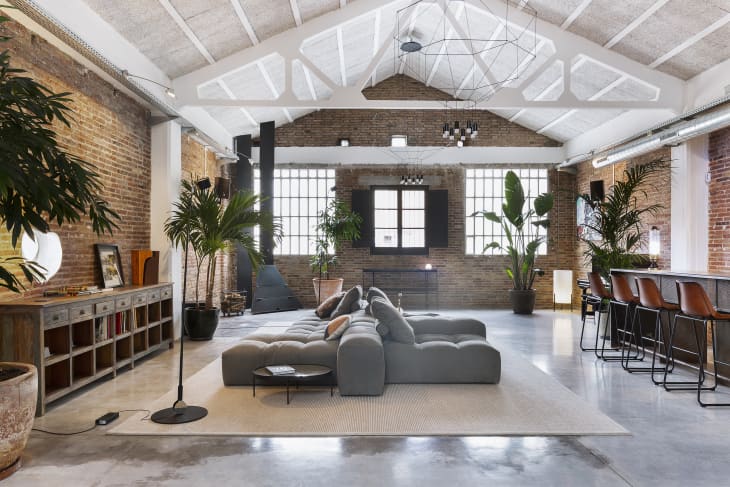
The design aesthetic began to increase in popularity in the late 2000’s and continued through the mid-2010’s. This design language can also be seen modern TV shows like Gossip Girl and New Girl alongside many newer restaurants and stores we see in day to day life. Even though we may not always be able to pick up on the style (since it is by nature more inconspicuous), it is still very prevalent in our daily lives. The tenants of this style range from repurposing old utilitarian places (like warehouses, factories, and industrial spaces) and repurposing them into a newer living space. It also seeks to repurpose and reuse those spaces into something that can be used today, while still keeping the core of what the building used to be. There is also an emphasis on exposed ducting, brick, beams, piping, as well as open flooring and large windows. Furthermore, the colors used in this style tend to be a more neutral and earthy colors. This allows furniture and other room accessories to act as focal points and liven up the room. Another aspect of industrial design is the way it mixes natural materials like wood, with man-made materials like steel and concrete. For example, there may be rooms that are heavy on wooden beams and support with wooden furniture that also has metal accents with concrete floors. While other rooms in this style might be mostly brick and steel.
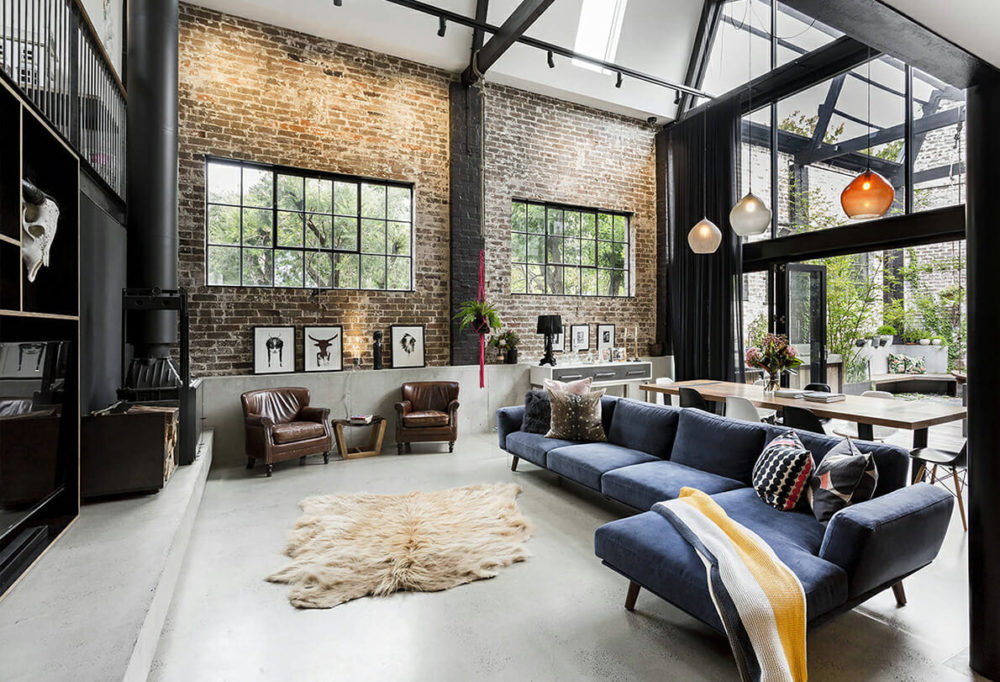
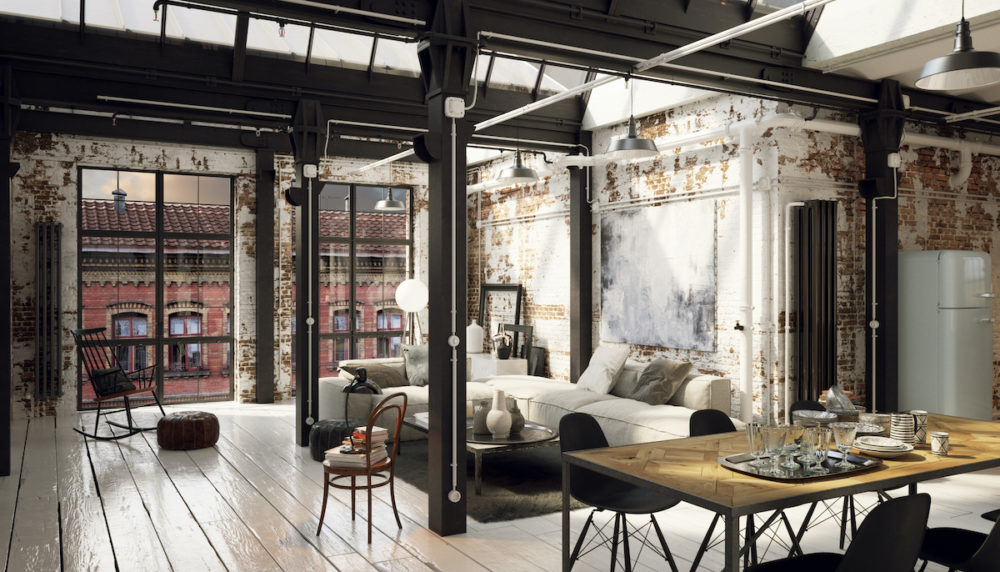
A new development to this aesthetic has also been the use of shipping containers as rooms or even homes in some scenarios. However, due to the nature of shipping containers and building codes, extensive overhauls are needed before the containers can be used as parts of homes.
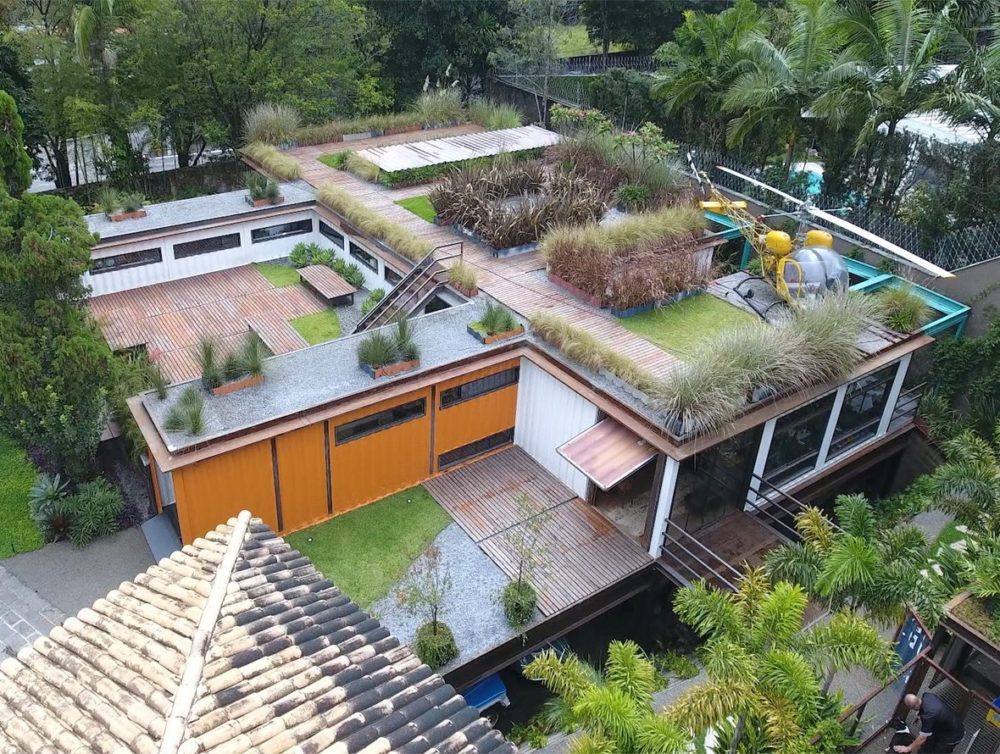
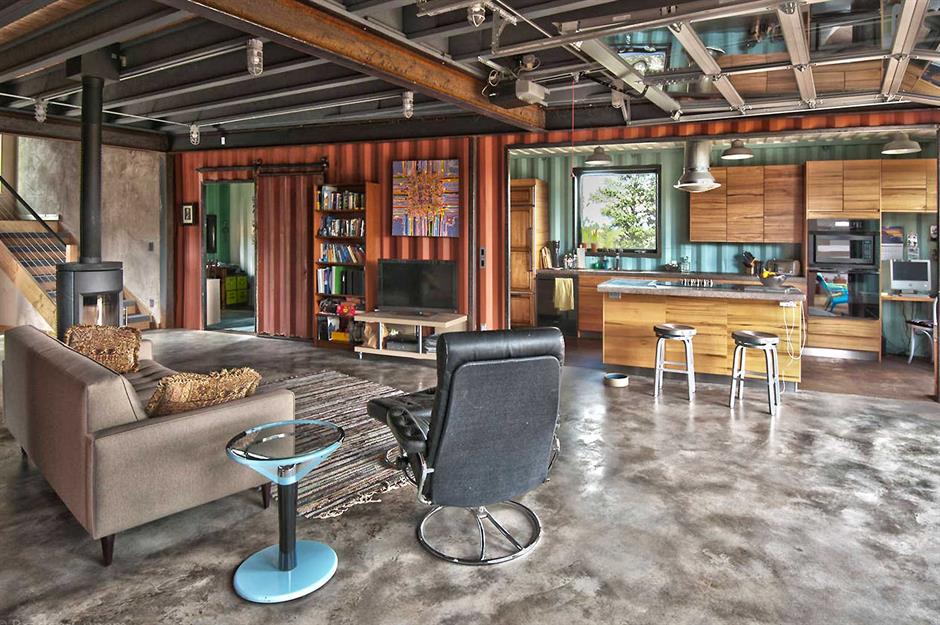
“21 Stunning Homes Made out of Shipping Containers.” LovePROPERTY, LovePROPERTY, 26 Dec. 2022, https://www.loveproperty.com/galleries/56395/21-stunning-homes-made-out-of-shipping-containers?page=1.
“Industrial Interior Design: 7 Characteristics of Industrial Style – 2023.” MasterClass, MasterClass, 8 July 2021, https://www.masterclass.com/articles/industrial-interior-design-explained.
“Industrial Style.” Wikipedia, Wikimedia Foundation, 22 Oct. 2020, https://en.wikipedia.org/wiki/Industrial_style.
“Industrial Style Shipping Container House/Garage/Gallery.” Industrial Style Shipping Container House/Garage/Gallery, Prefabcontainerhomes.org, https://www.prefabcontainerhomes.org/2020/05/industrial-style-shipping-container.html.
Kocharian, Anna. “Here’s Everything You Need to Know about Industrial Style.” Apartment Therapy, Apartment Therapy, LLC., 7 Aug. 2020, https://www.apartmenttherapy.com/industrial-style-36771433.
Phinney, Kevin. “Is the Industrial Aesthetic Going out of Style?” House Digest, House Digest, 4 Sept. 2022, https://www.housedigest.com/990404/is-the-industrial-aesthetic-going-out-of-style/.
Silvia. “Industrial Interior Design: 10 Best Tips for Mastering Your Rustic Industrial Decor Style.” Decorilla Online Interior Design, 21 July 2022, https://www.decorilla.com/online-decorating/industrial-interior-design-10-best-tips-for-mastering-your-rustic-industrial-decor-style/.


8 Comments. Leave new
The Industrial Design aesthetic is fascinating for its blend of functionality and raw beauty. The appeal of exposed brick, pipes, and wooden beams offers a unique contrast to more polished styles, embracing a utilitarian yet stylish look. It’s interesting to see how this design has evolved, incorporating elements like repurposed warehouses and even shipping containers. The mix of natural and man-made materials, along with earthy color tones, makes it versatile and timeless, adding character to both personal and . commercial spaces
Your style is really unique compared to other people I’ve read stuff from. Many thanks for posting when you have the opportunity, Guess I’ll just bookmark this page.
https://extraproxies.com/buy-proxies/2000-proxy-pack/
I really like the industrial aesthetic too. It kind of reminds me of brutalism, which is the aesthetic I choose to study. Industrialism also features exposed beams, pillars and brick walls. It differs in the way that it looks more cleaned up and modern as compared to brutalist buildings that look old, and depressing. I found it interesting on how old shipping containers constructed into homes. You would expect them to look rather bad but they actually do a very good job at stylizing them and making them comfy.
Hi Jose,
Thank you for your insightful comments. I found it interesting that you compared industrialism to brutalism. I can see what you mean though, there are a lot of commonalities between them because I do think they have a basis in a utilitarian stye. They focus on what using items that are normally seen as strictly functional. For me, I think the industrial style focuses on making those utilitarian things more visually appealing while brutalism leans into the raw nature of those utilitarian aspects and doesn’t try to dress them up, instead using them as they appear.
Hi Cody,
Industrial design has always been an aesthetic that I enjoyed. The idea of making functionality an aesthetic is fascinating to me. I also like how this kind of design could create a purpose and an aesthetic out of reused objects or materials that would otherwise most likely go to waste. I thoroughly enjoyed reading your take on this aesthetic and its history. Why do you think Industrial Design saw such a great rise in popularity recently?
Hi Ali,
I think that it saw such a rise in popularity because it can fit into the “modern” style of clean room styling and minimalism. It’s highly modular too from what I’ve seen with more rustic takes using more wood while more industrial takes use more metal and concrete in their design. This flexibility allows more individualization. Also, I think that the open plans, large windows, and simplicity also tracks with modern trends.
I recently been feeling very attracted to this aesthetic. I am glad you wrote about it because I was in the same situation as you: “Always seen/known about on a superficial level but never really understood”. I like also the bricks but also I have seen some places that follow this aesthetic with old paper walls or concrete (that sometimes is polished also for the floor). All in all what I found the most special about this aesthetic is the fact that the things used were meant to be functional only at first place.
That is true, when I learning more about this aesthetic, I did notice that concrete was also a prominent feature of the design aesthetic. It was up there with brick and metal as one of the core tenants of this aesthetic. The slight twist to functional items to make them decorative is something that also drew me to this aesthetic initially.